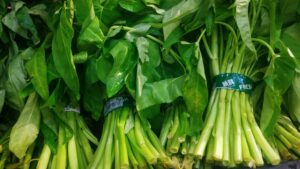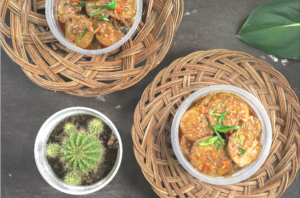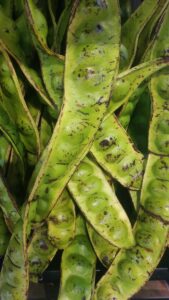Indonesia’s culinary wonders are an orchestra of flavors, and at the heart of its diverse cuisine are vegetables that add a unique touch to traditional dishes. Let’s dive into the realm of Indonesian vegetables, discovering five exceptional ingredients that not only define local cuisine but also bring a burst of distinctive tastes and nutritional benefits.
1. Kangkung (Water Spinach):
Scientifically known as Ipomoea aquatica, kangkung, or water spinach, is a culinary staple in Indonesia. Thriving in waterlogged conditions, this versatile vegetable graces stir-fries, soups, and salads. Bursting with vitamins A and C, and iron, kangkung imparts a mild, peppery flavor, becoming a favorite in Indonesian households.
2. Jengkol (Archidendron pauciflorum):
A distinctive vegetable in Indonesian cuisine, is known for its unique qualities. Derived from the jengkol tree, this small brown fruit has a strong aroma, transforming into a savory delicacy when cooked. Its nutty and slightly bitter taste makes it a standout ingredient in Indonesian curries and spicy dishes. Despite its acquired taste and potent scent, jengkol is cherished for its one-of-a-kind contribution to the rich tapestry of Indonesian gastronomy.
3. Petai (Stink Bean):
Parkia speciosa, colloquially known as petai or stink bean, is an aromatic delight in Indonesian cuisine. Despite its divisive smell, petai is a versatile ingredient featured in sambal and stir-fries. Packed with protein and fiber, this bean not only adds a unique flavor but also delivers nutritional benefits.
4. Genjer (Limnocharis flava):
Limnocharis flava, or genjer, is a hidden gem in Indonesian wetlands. With slender stems and edible leaves, genjer stars in lalapan and pecel. Its mild, sweet taste adds a distinctive touch to these dishes, offering a unique and delightful culinary experience.
5. Labu Siam (Chayote Squash):
Scientifically named Sechium edule, labu siam, or chayote squash, is a culinary chameleon in Indonesian kitchens. Known for its crisp texture and subtle sweetness, labu siam features in various dishes, including Sayur Labu Siam and lalapan. Low in calories and rich in fiber, it not only enhances the flavor but also contributes to a healthy culinary repertoire.
Conclusion:
Indonesia’s culinary magic isn’t just in its spices; it’s in the unique vegetables that weave a rich tapestry of flavors. From the pungent allure of petai to the subtle sweetness of labu siam, these vegetables are more than ingredients—they’re a journey into the heart of Indonesian cuisine.
As you embark on your exploration of Indonesian flavors, remember that DoorToID is here to support you beyond the culinary adventure. Whether you’re a traveler seeking to unravel the intricacies of Indonesian permits or a professional navigating the complexities of entry, stay, or working permits, DoorToID is your reliable partner.
For any inquiries or assistance, feel free to reach out to us at [email protected]. Our commitment to making your experience seamless extends to our mobile apps, available on both Apple and Android platforms. You can conveniently submit your permit applications via our user-friendly app at https://apps.doortoid.com/.
At DoorToID, we believe in simplifying the journey, ensuring that every step, from savoring unique flavors to securing necessary permits, is a smooth and enjoyable experience. Let us be your gateway to all that Indonesia has to offer.
Bon appétit and seamless travels with DoorToID!





